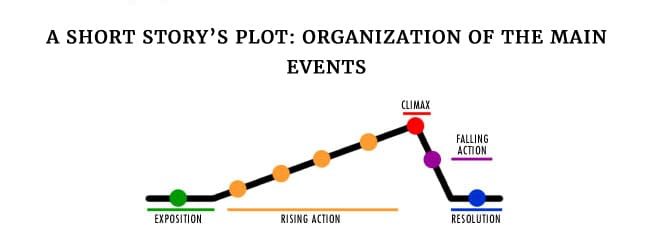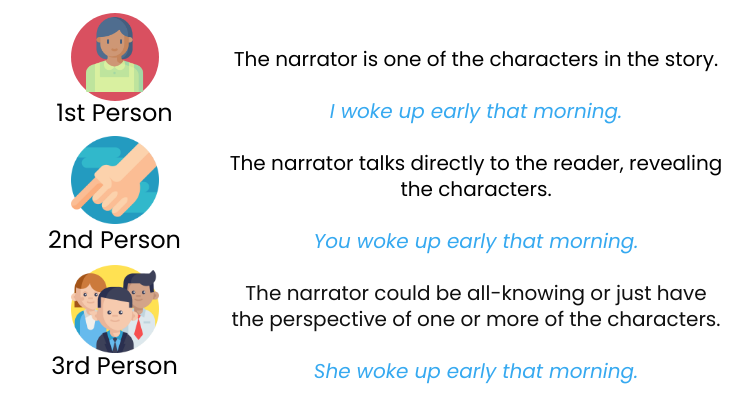To write a short story analysis, you should compose a brief summary and supplement it with a balanced and meaningful explanation of the text. A solid analysis should:
- Reveal the story’s essence, the author’s message, and the techniques used to convey it.
- Analyze the themes and how narrative elements and characters contribute to their development.
- Present relevant evidence and quotes.
Our custom-writing team will explain how to analyze a short story step by step. Here, you will learn strategies for interpreting the text and expressing your ideas. We will also explain short story analysis format rules, provide proofreading tips, and give examples.
And if you need a personalized approach, don’t hesitate to use our analytical essay writing service. We can handle any literary assignment, whether it is a short story analysis or a novel critique!
Below, you will find some tips that will help you to:
- Analyze the story while reading
- Put the findings in words
- Edit and polish your work
If you need a personalized approach, don’t hesitate to use our analytical essay writing service. We can expertly handle any literary analysis assignment, whether it is a short story or a novel!
👣 How to Analyze a Short Story Step by Step
Have you ever felt confused analyzing short stories for your school or college assignment? Not this time! We have prepared for you a step-by-step guide on how to analyze a short piece of writing quickly and effectively.
Step 1: Read Smart
The key to smart reading is to be critical. Criticism can be positive or negative. In your short story analysis, you need to have confidence in your own views of the work, regardless of the author’s reputation or whatever anyone else thinks.
The bottom line with literary criticism is that there are no right or wrong answers. As long as you back everything up with evidence, you can still attain a top grade if you take the opposite view to the author, your teacher, or the best student in your class.
But your reading needs to be methodical.
Step 2: Analyze & Find Examples
After you read the short story, you need to summarize it in your own words in no more than two sentences. This way, you will ensure that you’ve grasped its main idea.
Next, read the story one more time, paying attention to its literary elements, such as allusion, figurative language, plot, symbolism, etc. Analyze how they help the author convey the intended message. In addition, find relevant examples, quotes, or important passages that you can cite in your essay afterward.
Step 3: Create an Outline
Outlining is a crucial aspect of essay writing. It will help you understand how you can link all the facts to support the thesis statement and the paper’s arguments. Your short story analysis outline should look the following way:
Example:
- Introduction
- Introduction of the work (the author and title)
- A short summary of the story
- Thesis statement
- Body paragraph (include as many paragraphs as you need)
- Topic sentence
- Example from the text
- Analysis of the example
- Conclusion
- Restated thesis
- Summary of main points
- Concluding statement
If you need help outlining your short story analysis, try our free essay outline generator.
Step 4: Write Your Short Story Analysis
Now, it’s time to start drafting your essay. Here’s how to do it:
- At the beginning of your short story analysis, indicate the work’s title and the author’s name. Next, provide background information that may be helpful for understanding the story. End your introduction with an analytical thesis statement, clearly stating your evaluation of the text.
- Then, create body paragraphs based on your outline, including topic sentences and supporting examples.
- In the concluding paragraph, restate your thesis statement and highlight the important points you have made throughout the essay, giving the reader a feeling of closure.
Step 5: Revise and Proofread
Last but not least, proofread your short story analysis. It will help you to avoid grammatical mistakes, spelling errors, and typos.
If you have questions regarding your essay’s format or topic, it is always a good idea to ask for help from your teacher or classmate. Their experience and insights can help you adjust your analysis and improve its overall quality.
✒️ How to Analyze a Short Story: 6 Methods
When analyzing a short story, it is essential to examine all its main elements. In the following sections, we will discuss how to analyze the plot, characters, setting, themes, point of view, and style in detail.
Analyzing the Plot
For the first sitting, focus on the sequence of events that takes place throughout the story.

An analysis of a short story’s plot is easy because, unlike novels, which can contain multiple plotlines, short stories usually have only one.
To make the process even easier, here are some questions that you can ask yourself as you read:
- Does the plot hold your interest from beginning to end?
- What are the most important events, and why?
- Is plotline realistic?
- Are there any parts of the plotline that seem irrelevant to the main story?
- Does the plot deal with external conflict, internal conflict, or both?
- What is the moral of the story?
Next, you can look at the way the author portrays the characters in the story.
Short stories will not have many characters and often center around one main character, known as the protagonist.
Analyzing Characterization
Wondering how to analyze characters in a short story? The best way is to ask these questions:
- Who is the protagonist?
- How effectively does the author describe the characters’ actions, appearance, and thoughts?
- What are your feelings towards the characters?
- Does the way the characters speak give you any information about their personality?
- Do the characters change throughout the story?
- If the story contains minor characters, are they necessary and effective?
Alongside plot and characters, there is a third element that is a crucial part of any story:
Analyzing the Setting
Short stories are usually set in a single location and period, but some do have more than one.
These questions will help you master the setting:
- How does the author describe the location of the events?
- Does the story take place in the past, the present, or the future (or all three)?
- What are the broader circumstances surrounding the story’s setting?
- Does the setting play an essential role in the story?
- Do the place and time in which the author lived and worked affect the location and period in which the story is set?
- Has the author successfully given you a feeling of really being in the story’s setting?
Your next read-through might require some creative thinking and detective work as you consider the ideas, messages, or lessons behind the story.
Analyzing Themes
Analyzing a theme is your chance to stand out. While some themes are apparent and intended by the author, it is also possible to find more obscure ones. Even the author may not have been aware of them.
Answer these questions, and you’ve nailed the theme:
- What is the central theme? Are there any others?
- How is the theme conveyed?
- If the author is using the story to deliver a particular message, are you convinced by it?
- What does the theme reveal about the author?
Now you’re confident you understand the author’s message and can explore it in your short story analysis. Not so fast! You need to think about who is telling the story.
Analyzing the Point of View
Analyzing the point of view will give a more in-depth insight into all of the previous aspects you have dealt with. So ask yourself:
- Who is narrating the story?
- Does the author use a consistent point of view?
- Is the narrator telling the truth?
- Does the author have the same mindset as the narrator?
- Would the story be different if it were narrated from another point of view?

Finally, you need to look at the way the author uses language to tell the story.
Analyzing the Style
Ask the following questions when analyzing style:
- What is the author’s tone? Humorous? Serious? Sarcastic? Sentimental?
- Does the author use any unusual words or phrases? What effect do they have?
- Is there anything in the story – an object, for example – that has any special meaning?
- Does the author’s use of literary devices affect your enjoyment of the story in any way?
- What would the story be like if the author used a different style?
By now, you should be familiar with analyzing a short story and have enough great ideas to produce an A+ essay. Look again at the set question, and decide on the main direction you want your literary criticism essay to take.
Because now it’s time to wipe the dust off that keyboard:
✍️ Short Story Analysis Format
To get how to write a short story analysis step by step, you have to keep in mind the two golden rules:
- Your essay must be focused on the set question.
- Your opinions are only valid if you can support them with evidence.
Divide your work into three sections:
- Introduction (about 10% of the total word count)
- Main body (about 80% of the total word count)
- Conclusion (about 10% of the total word count)
Start with an Introduction
Your introduction should consist of one or two paragraphs that outline your statement of intent. You do not need to provide any evidence to back up your assertions at this stage – save that for the main body.
Here are the ingredients for a perfect introduction:
- An engaging opening line that captures the reader’s interest.
- The title of the short story and the name of the author.
- A brief outline of the main points and arguments that you intend to make.
Provide Arguments
Any story analysis has to list your points with proof. The main body is used to set out your case in detail and provide evidence to support it. Each paragraph should deal with a different point and follow a logical order that develops your overall argument.
Your main body is ready for the beach when it has:
- A persuasive and articulate argument.
- Evidence and quotes from the short story and external references, where appropriate, to support your case.
- Acknowledgment of any competing arguments to provide balance.
- Clear and concise language, with no repetition or irrelevant material.
- A clear focus on the set question.
Finish with a Bang
A conclusion ties everything together and briefly sums up your response to the set question. Like the introduction, it should be only one paragraph long and should not contain any new arguments, information, or evidence. If you can’t get rid of excessive fluff in your text, we’d suggest trying to use a paragraph shortener.
To finish your essay with a bang, you will need:
- A summary of the ideas that you have presented in the main body.
- Acknowledgment of any issues that need to be considered in the future.
- A powerful closing statement that encapsulates your overall position.
Once you have finished writing your literary analysis essay, the best thing you can do is take a break. When you return to review what you have done, it will be with a refreshed mind.
You’ve had fun criticizing the author. Now it’s time to look in the mirror:
📜 Short Story Analysis: Proofreading Tips
As usual, good things come in threes. Break your review down into these stages:
- Content editing
- Copy-editing
- Proofreading
For the first of these, you need to look at your essay as a whole and consider:
- Does your essay deal exclusively with the set question?
- Does your introduction accurately preview the content of the main body?
- Does each paragraph in the main body follow a logical order?
- Does your essay contain any repetition, inaccuracy, or irrelevant material?
- Does your conclusion successfully sum up your argument?
- Are your references accurate and appropriate?
- Will your reader find your essay to be enjoyable, easy to understand, and persuasive?
Once you are happy with your essay’s content, you can review it in more detail to deal with the text’s accuracy and consistency.
Reading carefully, line by line, ask yourself:
- Is your language as clear and concise as possible?
- Are your grammar and spelling correct?
- Have you presented acronyms, abbreviations, capitalization correctly and consistently?
- Are your quotations and references in the correct format?
- Are there any other formatting issues with your document?
Take another break, then review your essay one last time. Use your spellchecker, then print off a copy and read slowly and carefully, line by line. Hopefully, there won’t be too many errors by this stage but think of this process as a final polish to make your work really shine.
📝 Short Story Analysis Example
We have prepared an analysis example of the short story “The Last Leaf” by O. Henry. You can use it to find inspiration and see how everything works in practice.
Example:
In O. Henry’s “The Last Leaf,” a sick artist named Johnsy sees hope fading with each falling leaf outside her window. She is convinced that she will die when the last leaf falls. But two things stand against her despair: Behrman, an old, seemingly failed artist, and Sue, Johnsy’s loyal friend. This story shows how the actions of Johnsy’s companions become her lifelines, proving that art and friendship can blossom even in the direst circumstances.
Behrman’s sacrifice is one of the key themes in the story. O. Henry devotes much of his story to describing Behrman, a loser who drinks too much gin and lives a mostly wasted life. He appears to have no family and has not produced any notable work despite identifying himself as an artist: “Behrman was a failure in art. Forty years he had wielded the brush without getting near enough to touch the hem of his Mistress’s robe.” Despite Behrman’s never being successful in his craft, the realistic painting of a leaf he created before his death saved Johnsy’s life.
Friendship is another important motif in the story. Sue and Johnsy are more than just good friends; they are like sisters. Sue’s care and support have also played a key role in helping Johnsy recover. When Johnsy asks Sue to leave, Sue says, “I’d rather be here by you.” And she is actually there for Johnsy, caring for her in the worst moments of her life.
“The Last Leaf” reminds us that even when darkness creeps in, the power of art and friendship can bring light. Through Behrman’s final masterpiece and Sue’s unwavering support, Johnsy finds her way back from the brink. This simple story leaves readers with a powerful message: even in the darkest times, hope can be a driving force that can save a human life.
📚 Short Story Analysis Topics
- Analysis of Faulkner’s A Rose for Emily.
- Discuss the clues that suggest the unreliability of the narrator in E. A. Poe’s The Fall of the House of Usher.
- Describe the stylistic devices James Joyce uses in his short story Araby.
- Irony and double denouement in O. Henry’s The Gift of the Magi.
- Analysis of A&P by John Updike.
- Interpret Raymond Carver’s message in his story What We Talk About When We Talk About Love.
- Examine the theme of the short story The Yellow Wall-Paper by Charlotte Perkins Gilman.
- Analyze the rhetoric means used in Edith Wharton’s The Other Two.
- Literature analysis of Shirley Jackson’s short story The Lottery.
- The impact of gender and racial stereotypes in Sweat by Hurston.
- Discuss August Wilson’s presentation of conflicts in the short story Fences.
- Symbolism in Ernest Hemingway’s Hills Like White Elephants.
- Describe the rhetoric techniques Nathaniel Hawthorne uses in his short story The Birth-Mark.
- The Minister’s Black Veil by Nathaniel Hawthorne analysis.
- Analyze the social issues presented in Toni Bambara’s The Lesson.
- Explore the central theme of the story Alien by Riley Brett.
- Social problems of women and role of racial differences in Kate Chopin’s Desiree’s Baby.
- Discuss the central ethical dilemma presented by Sarah Hall in Theatre 6.
- Analysis of A Clean, Well-Lighted Place by Ernest Hemingway.
- Examine the techniques Edwidge Danticat uses to paint a picture of life in Haiti in A Wall of Fire Rising.
- Discuss the core idea of The Things They Carried by Tim O’Brien.
- Literary devices in The Dinner Party short story by Mona Gardner.
- Analyze the author’s message in Lore Segal’s The Arbus Factor.
- Interpret the meaning of symbols in Rip Van Winkle by W. Irving.
- The meaning of setting in The Boarder by Isaac Bashevis Singer.
- Describe the different layers of meaning presented in Joyce Carol Oates’ Where Are You Going, Where Have You Been?
- Analyze the tone of the story The Masque of the Red Death by Edgar Allan Poe.
- Allegory in The Devil and Tom Walker short story by Washington Irving.
- Analyze the main female character of the short story A Good Man Is Hard to Find by Flannery O’Connor.
- Discuss the rhetoric used by Guy de Maupassant in The Necklace.
- Examine the symbols in Mr. Green by Olen Butler.
- Explore the main theme of James Joyce’s The Dead.
- Interpret the meaning of the dolls in a short story Barbie-Q by Sandra Cisneros
- Symbolism in A Jury of Her Peers by Susan Glaspell.
- Analyze the core idea of Jack London’s To Build a Fire.
- The conflict between the expectations and reality in Jamel Brinkley’s A Family.
- Examine the message E. Hemingway includes in his short story The Killer.
- Discuss the stylistic means used by Anton Chekhov in Sleepy.
- Describe the ideas O. Henry uses to present the moral lesson in The Last Leaf.
- Analysis of The Outcasts of Poker Flat by Bret Harte.
- Psychologism and mystique in W. W. Jacob’s The Monkey’s Paw.
- Analyze the symbols in the story A Worn Path by Eudora Welty.
- Describe how William Faulkner presents a theme of revenge in Barn Burning.
- Interpret creativity Kate Chopin’s The Storm.
- Discuss the techniques E. A. Poe uses to create the suspense in the short story Cask of the Amontillado.
- Cathedral by Raymond Carver analysis.
- The issues of stereotypes and isolation in Margaret Atwood’s Lusus Naturae.
- Magic realism in The Secret Miracle by Jorge Luis Borges.
- Interpret the meaning of symbols used by Flannery O’Connor in Good Country People.
- Technology development and its effect on human in Ray Bradbury’s The Veldt.
So, now you know how to analyze a short story step by step. A flawless piece of work will be a pleasure for your reader to behold! Share the page with others who may find it useful. And thanks for reading it!
Learn more on this topic:

![Common Essay Mistakes—Writing Errors to Avoid [Updated]](https://custom-writing.org/blog/wp-content/uploads/2020/12/avoid-mistakes-ccw-284x153.jpg)

![Why I Want to Be a Teacher Essay: Writing Guide [2025]](https://custom-writing.org/blog/wp-content/uploads/2020/12/senior-male-professor-writing-blackboard-with-chalk3-284x153.jpg)
![Friendship Essay: Writing Guide & Topics on Friendship [New]](https://custom-writing.org/blog/wp-content/uploads/2020/12/smiley-female-friends-fist-bumping-284x153.jpg)





![Growing Up Essay: Guide & Examples [2025]](https://custom-writing.org/blog/wp-content/uploads/2020/12/gardening-concept-with-mother-daughter-284x153.jpg)
![Murder Essay: Examples, Topics, and Killer Tips [2025]](https://custom-writing.org/blog/wp-content/uploads/2020/12/man-holding-gun-as-evidence-284x153.jpeg)
Can someone help me with what are the key tips of ” How to move from the subject of the evaluation to the working thesis?
Your source is not enough.
This is a great resource for getting help in writing various paper types. Thanks for the perfect guide to literary criticism essay writing! Once again, thanks for the awesome help!
Excellent information on literary criticism essay writing! I think it’s enough to write an essay yourself.